The Cordoba Mezquita, The Moors, and Mudejar – Oh My!
The Mezquita, also known as the Mosque-Cathedral of Córdoba, is one of Spain’s most iconic and historically significant monuments. During my two-week stay, I visited the Cordoba Mezquita on two occasions. I visited at night and another time during the late afternoon/early evening. Below is a brief history and some recommendations based on my experiences.
*This post contains affiliate links for which I may receive a small commission should a purchase result from a click. This, in no way, affects you or your cost.*
The construction of the Mezquita began in the 8th century, shortly after the Islamic Moors conquered the Iberian Peninsula. The Moors, who were North African Muslims, began their conquest of the Iberian Peninsula in the early 8th century. In 711, they successfully conquered Córdoba, establishing Islamic rule in the region.
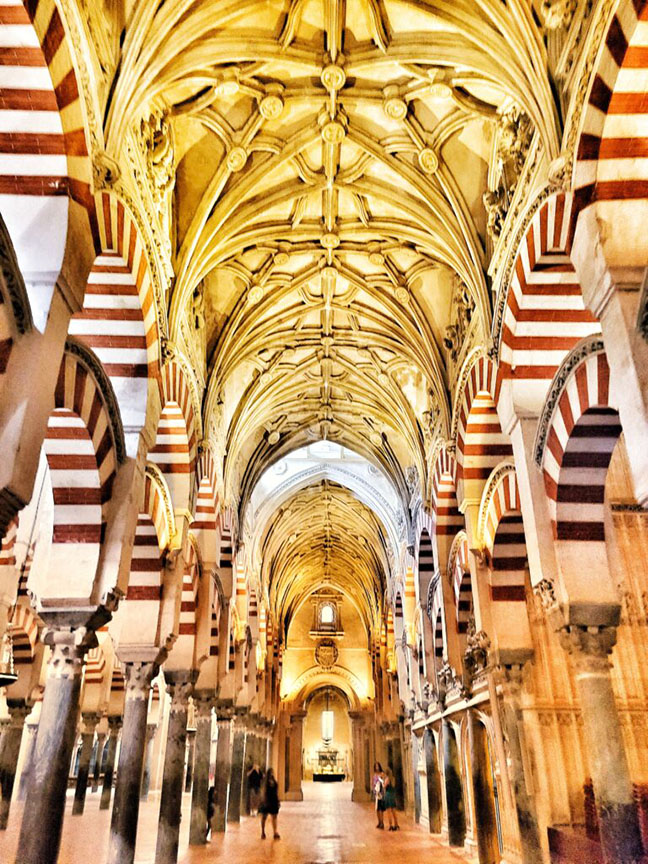
The original Cordoba Mezquita was later expanded and transformed into a large mosque by various Islamic rulers, most notably Emir Abd al-Rahman I in the 8th century. The Moors were known for their advanced architectural skills, and these were prominently showcased in the Mezquita’s design. With a profound appreciation for their predecessors’ architectural and artistic heritage, they preserved Roman and Visigothic structures, incorporating them into their own architectural projects, including the Cordoba Mezquita.
Over the centuries, the mosque underwent numerous expansions and renovations, resulting in a stunning complex with rows of horseshoe arches, columns, and intricate geometric designs. The Mezquita was not only a place of worship but also a center of learning and culture during the Islamic rule in Córdoba.
CHRISTIAN CONQUEST
In 1236, Christian forces recaptured Córdoba during the Reconquista, a centuries-long campaign to reclaim the Iberian Peninsula from Islamic rule. They converted the mosque into a Christian cathedral by constructing a Gothic cathedral nave inside the existing structure. They began integrating Christian elements into the mosque-cathedral and gradually added various chapels, altars, and other Christian features over time.
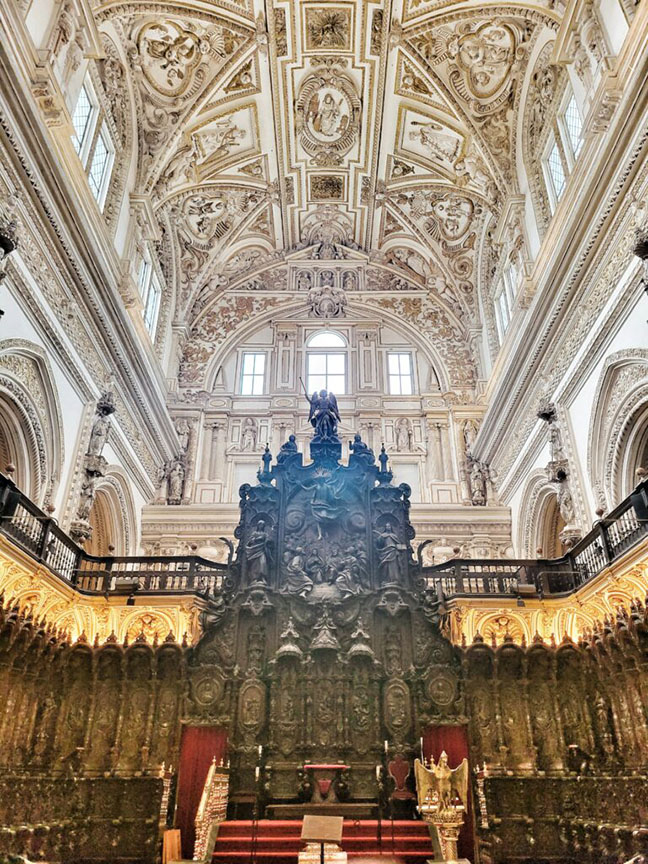
In the 16th century, they built a Renaissance-style cathedral nave called the Capilla Mayor inside the mosque-cathedral, blending architectural styles. In the 18th century, Baroque-style choir stalls were added, adding another layer of architectural influence. The chapel features a grand altar and elaborate decorations, showcasing intricate detailing and artistic craftsmanship, contrasting with the mosque’s Islamic architecture.
MUDEJAR ARCHITECTURE & DESIGN
Despite the various modifications, efforts were made in the 19th and 20th centuries to preserve the unique blend of Islamic and Christian architecture, much of which is known as Mudejar. This fascinating blend of Islamic and Christian design elements reflects the cultural and architectural influences of both civilizations.
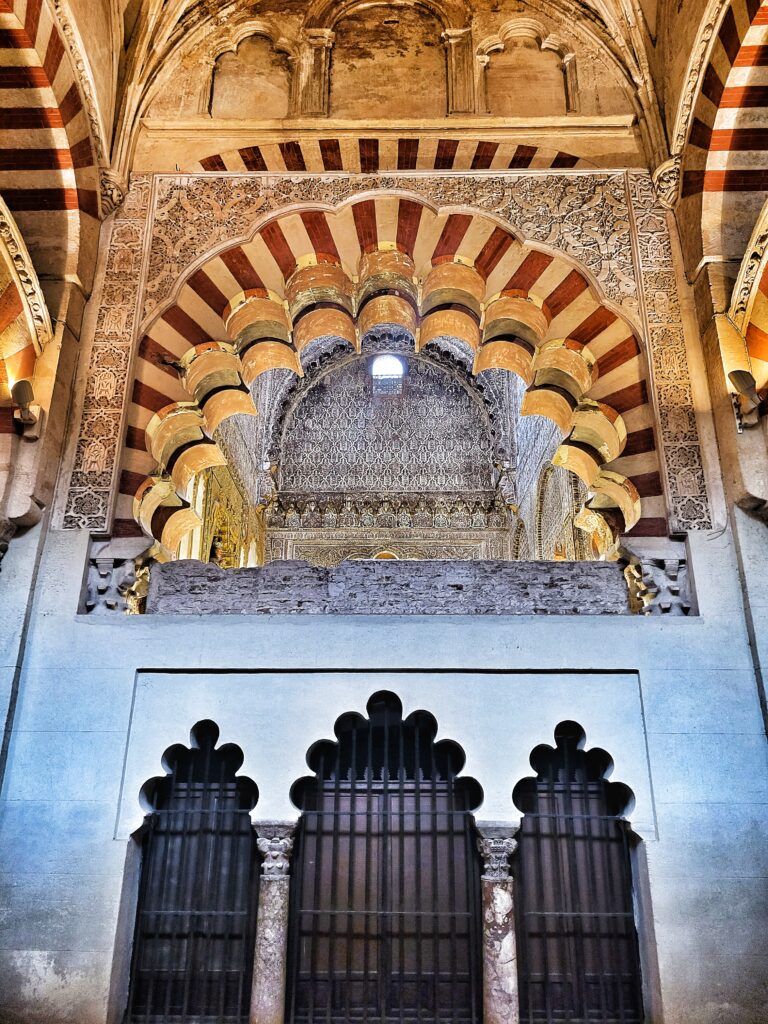
The original mosque, constructed during the Islamic era, features a vast forest of horseshoe arches made of alternating red and white archstones. These arches are a striking visual element characteristic of Islamic architecture. Additionally, the mihrab, a semi-circular niche in the wall indicating the direction of Mecca, is adorned with intricate tilework and geometric patterns. You can find examples of colorful tilework and sophisticated elements that adorn the walls and ceilings of the Cordoba Mezquita.
One of the many highlights of the Mezquita is the Villaviciosa Chapel, which boasts a stunning Mudéjar coffered ceiling with intricate wooden geometric patterns. This ceiling is a testament to the skilled craftsmanship of Mudéjar artisans. It goes without surprise that in 1984, the Cordoba Mezquita and the entire historic center of Cordoba were designated as a UNESCO World Heritage Site, recognizing its cultural and historical significance.
CONVIVENCIA
The Mezquita is a testament to the cultural interchange and coexistence of Islamic and Christian civilizations in Spain. Córdoba, particularly during its Islamic rule from the 8th to the 13th centuries, is celebrated for its remarkable harmony of religions and cultures. This is often referred to as “convivencia.”
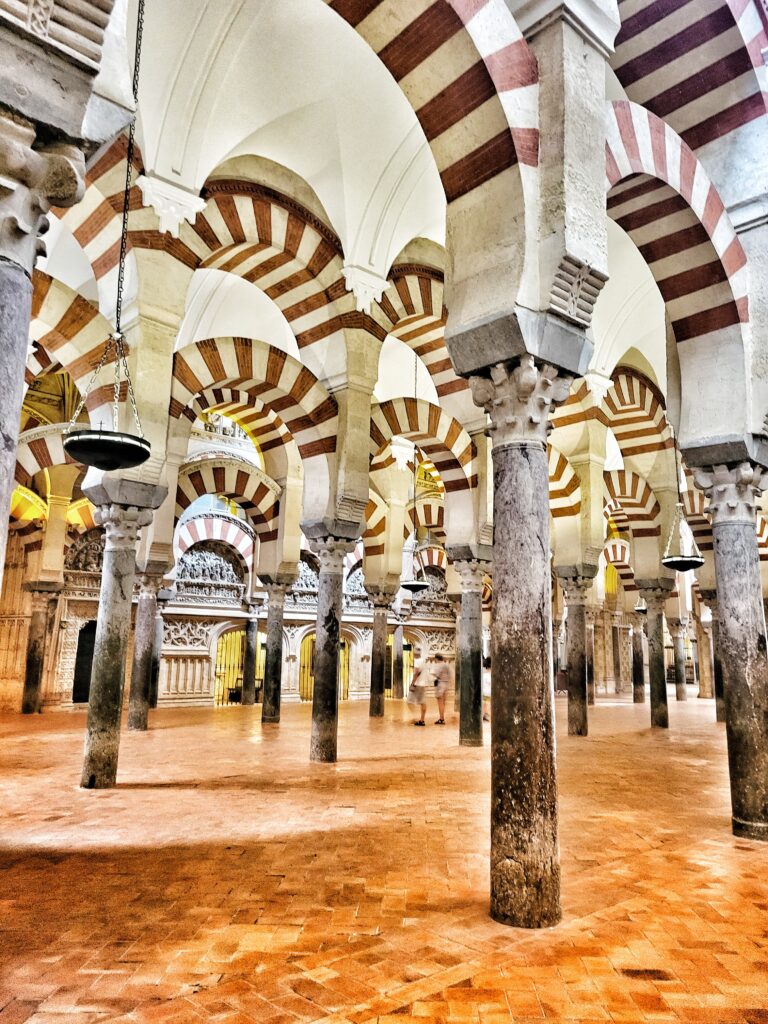
Convivencia is a Spanish term that translates to “coexistence” or “living together.” It signifies a period in Córdoba’s history. Muslims, Christians, and Jews lived in relative harmony and mutual respect, contributing to a flourishing of culture, learning, and intellectual exchange.
Córdoba’s convivencia demonstrates harmonious coexistence among cultures and religions. It’s a historical example of thriving societies through diversity, intellectual exchange, and religious respect. Today, Córdoba’s cultural heritage and architectural brilliance, including the Mezquita, reflect this period of coexistence and collaboration.
CORDOBA MEZQUITA NIGHT TOUR VS. DAY TOUR
Many blogs praise the night tour, but I disagree. I suggest visiting around 5 pm on a weekday when most tours are over. I’ve tried both, and the latter is the best way to enjoy the history and architectural marvel!
Furthermore, you’re not allowed to take photos of any kind inside the structure during the night tour. It also felt rushed, and given that it’s already pretty dim inside, the night tour was exceptionally dark.
Today, the Cordoba Mezquita stands as a symbol of the Andalucían city’s rich history. Millions of tourists from around the world, like myself, come to admire its architectural beauty and historical significance.
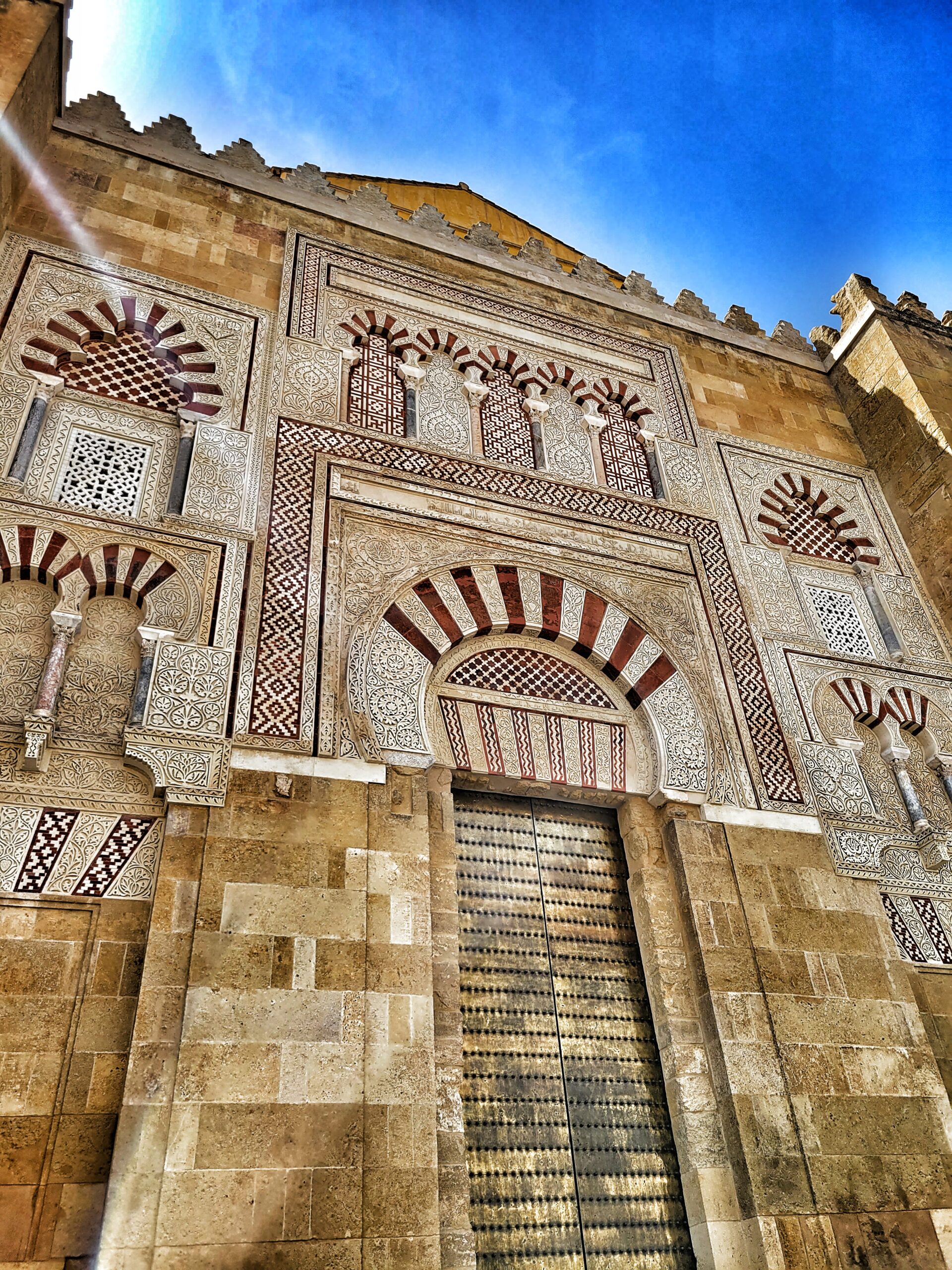
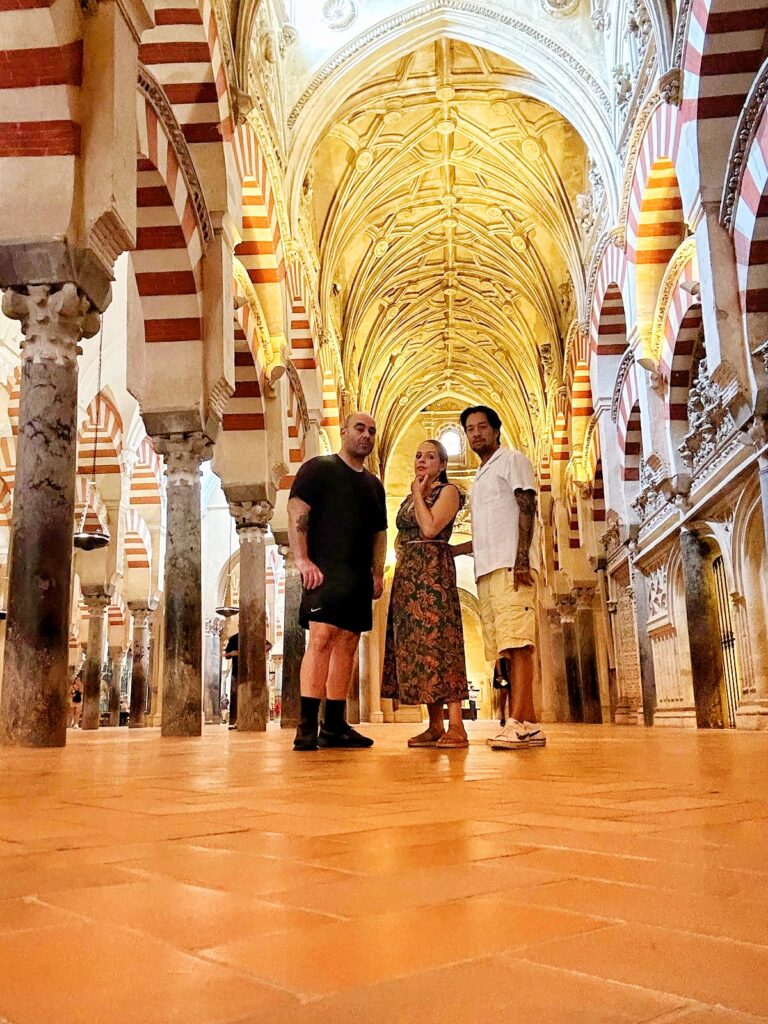
Kasey
September 6, 2023 at 1:18 PMWow! That was a wonderful read, it felt like I was there! The architectural blend is interesting!
Linds
September 6, 2023 at 11:34 PMThank you for reading, Kasey! I’m happy to hear you enjoyed it 🙂 I, too, am fascinated by the architectural and cultural blends!
James Asuncion
September 7, 2023 at 2:28 AMThese photos are definitely a highlight of what an amazing ancient and historical place to visit.
Linds
September 7, 2023 at 2:50 AMThank you for reading! Glad you enjoyed the fotos!
Handkerchief Alley in Córdoba, Spain | The Road Linds Travels
September 7, 2023 at 9:14 AM[…] Alley is strategically located near some of Córdoba’s most famous landmarks, including the Mezquita. Its central location makes it an ideal place to soak in the ambiance of the city without having to […]
Sangria Day - December 20th | The Road Linds Travels
December 20, 2023 at 3:51 PM[…] to drink, as water purification methods were limited. This practice evolved over time, and as the Islamic Moors later occupied Spain, they added fruits and spices to the mix, creating a precursor to what we now […]